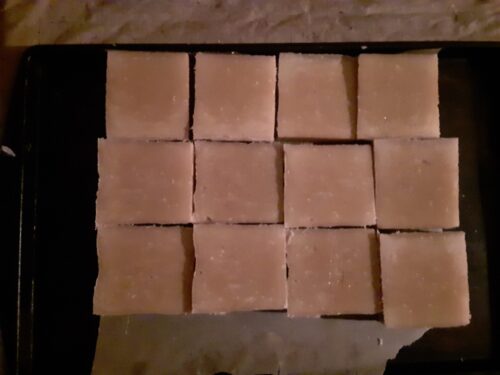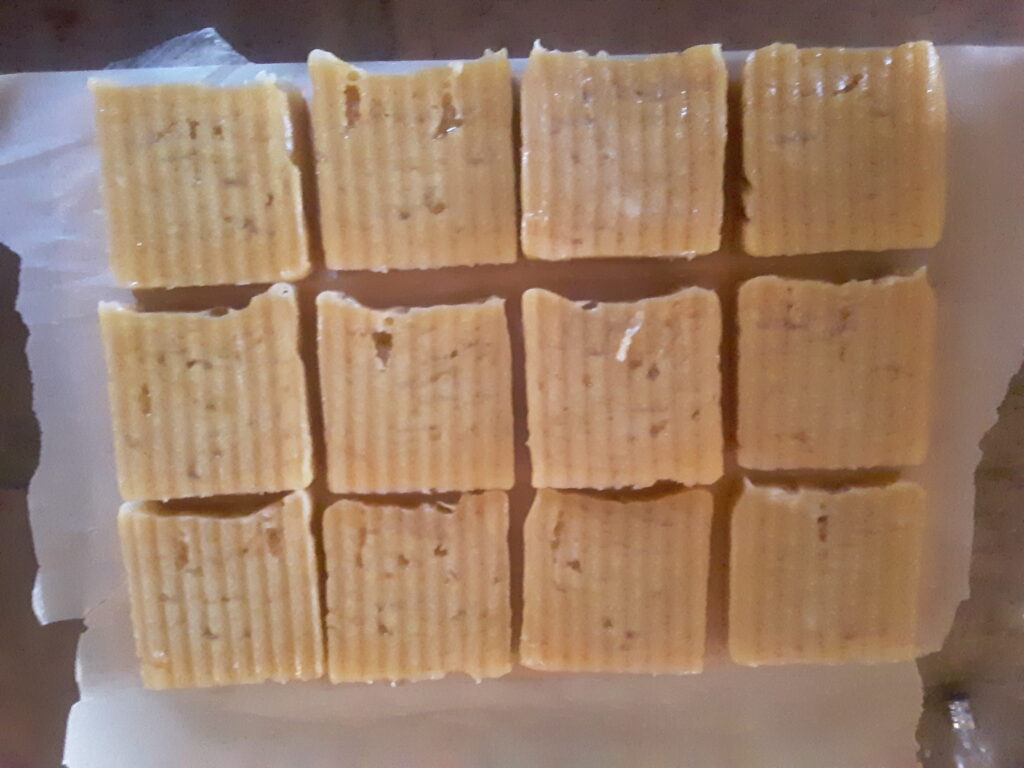
Hi, Phoenix here, wrapping up the blog post series on dairy farming with something a little different. The previous posts in this series have focused on making food: fresh cheese, aged cheese, and keto ice cream. But there are several non-food uses for goat milk, like making different types of soap and lotions. In this post, I want to talk about the experiences K and I have had making body soap bars and shampoo bars using goat milk.
Making soap is complicated and needs to be done carefully if using lye. There are entire books and websites dedicated to teaching about soap-making; it would be foolish to attempt to condense all that material into one short post. Instead, I want to explain why K and I decided to start making our own soap and what we learned from the process.
Even before I started homesteading, I wanted to use goat milk soap because it would be better for my dry skin. But I didn’t want to spend so much money on fancy, albeit gorgeous, soaps at the farmer’s market. Instead, I wanted nourishing, low fragrance, limited ingredient soap that I could make at a low cost.

Once I got goats on the homestead, I knew this was my opportunity. Now, K and I make body soap bars and shampoo bars using our goat milk and goat fat (a.k.a tallow). This allows us to use as many local ingredients as is possible for us right now. We like to use the cold-process method of soap-making, which doesn’t involve cooking the soap mixture for one to two hours. The bars turn out much smoother using this method, but they need to be cured for 4 to 6 weeks before they’re ready for use. Besides the benefits of having healthier skin and hair, we’re throwing out fewer plastic bottles. We still have a long way to go on our soap making journey. Besides practicing making more body soap and shampoo bars, I want to incorporate more local ingredients and start making our own laundry detergent and dish soap to further reduce our plastic waste. But, it’s a start.
And it is oh so satisfying to use the luxurious soap we made with ingredients from our homestead!
Yet again, soap-making is a way to become more self-sufficient and lower your environmental footprint, even without a homestead. Upfront costs of equipment include separate large stainless steel pots, stainless steel spoons, protective gear like gloves, masks and eyeglasses when dealing with lye, a kitchen scale for weighing out ingredients, an immersion blender, mixing bowls, measuring cups and soap molds. It’s best to keep these tools separate due to the corrosive nature of lye. The cost of ingredients can also be high, but you can keep the costs down by choosing basic soap recipes and using containers you already have for soap molds. Over time, making your own soap can save you money and lead to a healthier you.
Next blog post: Solar panels revisited (by K)
